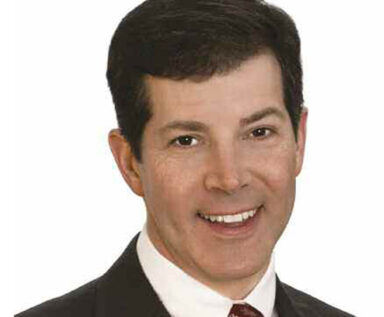Stroke Prevention: A Physician’s Perspective
- By Trudie Mitschang

DR. PHILIP MEYERS, MD, FAHA, is professor of radiology and neurological surgery at Columbia University, College of Physicians and Surgeons. He is also clinical director, neuroendovascular service at New York Presbyterian–Columbia Neurological Institute of New York and first past president of the Society of Neurointerventional Surgery.
BSTQ: How common is stroke?
Dr. Meyers: Current American Heart Association statistics document 800,000 strokes in the United States each year, and it’s the fourth leading cause of adult death and leading cause of adult disability. When you look at those statistics, it’s sobering to realize that while there are lifestyle and hereditary factors, nearly everyone is at risk.
BSTQ:What are the main risk factors?
Dr. Meyers: The risk factors for stroke are the same as heart attack: smoking, obesity and high blood pressure. The big challenge with stroke is that, unlike a heart attack, a stroke can occur with minimal symptoms. If patients do not realize they are having a stroke, they may delay seeking treatment. One of the biggest public health challenges we are trying to address is the need for early recognition. We know that other countries are doing a better job than we are; recent statistics out of the Netherlands and Scandinavia show really rapid response times compared to the U.S. Again, because patients may not recognize symptoms, many choose to get themselves to the hospital instead of calling an ambulance, increasing the risk of permanent disability or death.
BSTQ: What are some of the warning symptoms of stroke?
Dr. Meyers: Stroke symptoms appear suddenly and include numbness or weakness, especially on one side of the body; confusion or trouble speaking; trouble seeing out of one or both eyes; trouble with walking, dizziness, loss of balance or coordination; or severe headache with no known cause.
BSTQ: Tell us about your work in neurointerventional surgery.
Dr. Meyers: Neurointerventional surgery is a minimally invasive procedure to diagnose and treat diseases of the brain, head, neck and spine. With stroke patients, the goal is to reach inside the blood vessels and pull clots out of the artery, much the way a heart surgeon goes in to reopen an artery. This type of procedure is typically performed on patients presenting symptoms of a major stroke, and in situations where tissue plasminogen activator (tPA), a U.S. Food and Drug Administration-approved clot-busting drug, would be ineffective. At Columbia, there may be 1,000 stroke patients a year, but I only use this type of surgery to treat the most severe.
BSTQ: Are there promising new stroke treatments on the horizon?
Dr. Meyers: There is constant effort and research to uncover new treatment options. Millions of dollars are being spent to help prevent or delay artery blocks before irreversible damage occurs, and new clot-busting drugs are on the horizon. One area that’s received a lot of attention is hypothermic therapy — cooling the stroke patient for 12 to 24 hours following the stroke. This treatment is now part of the American Heart Association’s treatment guidelines after several studies showed that it can improve survival rates and brain function by decreasing the brain’s oxygen demand, reducing the production of neurotransmitters like glutamate, as well as reducing free radicals that might damage the brain. The lowering of body temperature may be accomplished by the use of cooling blankets, cooling helmets and cooling catheters.
BSTQ: How is the healthcare industry addressing the needs of stroke patients?
Dr. Meyers: Great advances have been made in the development of a tiered system of stroke care centers that provide stroke patients with the best long-term outcomes. The first level of care is a local “stroke-ready” hospital, where the patient can be rapidly assessed. These facilities have communication systems in place that facilitate collaboration with outside stroke experts who can advise on preferred treatment plans. The second level of care is the primary stroke hospital, where patients can be rapidly evaluated and given the clot-busting drug tPA. However, for many patients, tPA alone may not be sufficient. In these cases, more advanced interventional techniques are required. This is where a comprehensive stroke hospital offering the full range of neurology and neurosurgical services is essential. Comprehensive stroke center designation is established by the Joint Commission and the American Heart Association/American Stroke Association, and recognizes significant effort in everything from training to infrastructure to providing state-of-the-art complex stroke care.